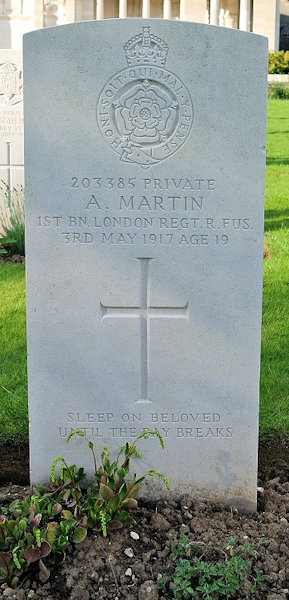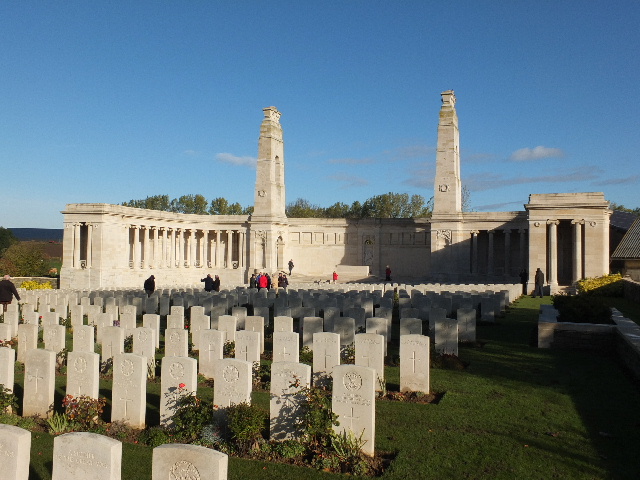Name
Alfred Martin
Conflict
First World War
Date of Death / Age
03/05/1917
19
Rank, Service Number & Service Details
Private
203385
London Regiment (Royal Fusiliers)
1st (City of London) Bn.
Awards: Service Medals/Honour Awards
Not Yet Researched
Cemetery/Memorial: Name/Reference/Country
VIS-EN-ARTOIS MEMORIAL
VI. C. 26.
France
Headstone Inscription
‘Sleep on beloved until the day breaks
UK & Other Memorials
Standon War Memorial,
St Mary’s Church Memorial, Standon,
Puckeridge Memorial Plaque, Standon Village Hall, Standon
Biography
Alfred was a Private, No. 203385 in the 1st Battalion, the Royal Fusiliers (London Regiment). Formerly No. 6843, 2nd Battalion, the London Regiment. He was killed in action 3rd May 1917 at the age of 19.
He is buried in Vis-en-Artois British Cemetery, Haucourt, France, which is located on the road from Arras to Cambrai, and his grave reference is VI. C. 26. There is an inscription at the base of his headstone: ‘Sleep on beloved until the day breaks’
He was the only child of Alfred and Kate (nee Pateman) Martin of Hadham Road, Standon.
Alfred was born 11th August, 1897 and baptised at St Mary’s Church in September of that year. In 1901 the family were living in Standon High Street, quite near the Star pub. Alfred’s father was a farm labourer and horse-keeper at that point. The next record found for Alfred was an entry in an old Parish magazine dated 1903 when he was awarded a school prize for attendance and progress.
By 1911 the family had moved to Hadham Road, near the almshouses, and Alfred’s maternal grandfather, a widower, James Pateman was living with them, and even at the age of 71 he was described as a Roadman (building and/or maintaining the roads). Alfred’s father had changed occupation and was then a railway platelayer.
According to information given in ‘Soldiers who Died in the Great War’, Alfred’s ‘place of residence’ at enlistment was Canning Town. We do not yet know what occupation he followed, but may well have moved nearer to London for work.
We do not have the benefit of his service record to tell us details of his movements, but from the regiment and date and location of his death, it is likely that he died taking part in the 3rd Battle of the Scarpe, which was a phase of the Battle of Arras, part of the Allied Spring Offensive in Artois and Champagne.
The Battle of Arras was intended to pin German forces in Arras-Somme while the French attacked in Champagne but it became a costly and attritional struggle.
Acknowledgments
Di Vanderson, Jonty Wild



